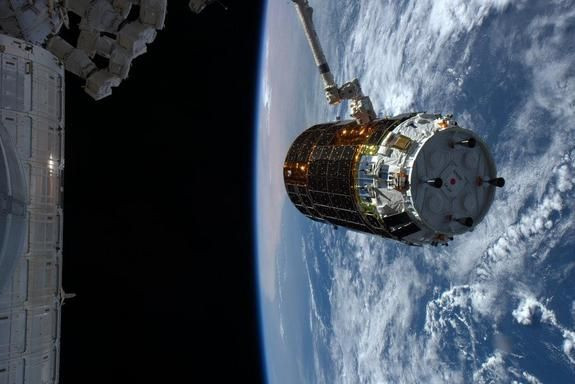Japanese cargo ship successfully delivers whiskey for ageing process, other supplies to Space Station

A robotic Japanese cargo ship has successfully delivered new supplies to the International Space Station on Monday, after a four-day journey to carry tons of supplies. The cargo ship carried the first Japanese liquor to be used for experiments on the development of mellowness through the a microgravity environment.
The H-II Transfer Vehicle, or otherwise called as the HTV-5, arrived at the space station to ensure sustainable food supplies through the end of 2015, and provide supplies that will support the crew members on conducting further off-Earth researches, NASA said in a press release. The spacecraft has an adjusted cargo to deliver additional food supplies and critical components that have been lost in the failure of the seventh SpaceX commercial resupply services mission.
In early August, the Japan Aerospace Exploration Agency, or JAXA, has announced a team up with the Japanese distillery Suntory Global Innovation Centre to conduct an off-Earth experiment to find the ideal ageing process and scientific explanation for the mechanism that makes alcohol mellow. The Japanese distillery provided the liquors that will be used for the experiment.
The HTV-5 spacecraft delivered about 9,500 pounds of supplies and science gear, including a Fluids Control and Pump Assembly to process urine to support water recycling, two multi-filtration beds that filter water supply and devices to provide the basic necessities of the astronauts.
The spacecraft also carried 12 mice to help astronauts conduct the experiment to understand the effects of weightlessness during long space missions. The mice, according to the release, are placed in compartments that can switch between microgravity and Earth gravity as part of that study.
There are also a variety of small satellites, including 14 Earth-watching Dove cubesat satellites, which will be used to observe Earth, and to test communications systems for global aircraft tracking. The cubesat satellites will also test the student-built AAUSAT5 designed to test ship beacon signal technology.
The HTV-5 spacecraft will stay attached to the orbiting space laboratory for five weeks, and will be filled with trash after getting the cargo supplies. The spacecraft will be detached from the station and travel to burn up in Earth's atmosphere.
Contact the writer at feedback@ibtimes.com.au or tell us what you think below




















